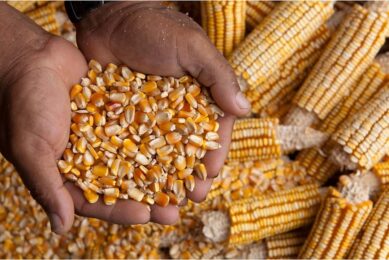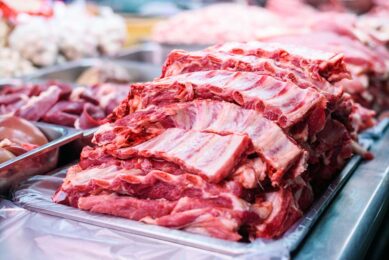BLOG: Consumerism – analysis or just more politics?

We are all consumers but I have to say I was disappointed when the European Consumer Organisation (BEUC) ‘The Consumer Voice in Europe’ recently issued their report: ‘Antibiotics use in livestock: Time to act.’
In the UK we have a very active consumer organisation WHICH? It is highly respected as it studies, compares and analyses various products and services and advises which the best or worst buys are. I am not sure how much analysis across the EU Member States (MS) was carried out by BEUC and whether any consumers were asked their opinions or thoughts? Were hard working farmers and veterinarians consulted about what would be the best practical approaches and solutions going forward? Does the consumer really share their concerns or is price of food, availability and quality more important? Unfortunately, the report appears to be a collation of populist MS opinions mainly directed by our Scandinavian partners.
Some of the key points in the report: –
- ‘Restricting the use of antibiotics to therapeutic use, better regulate and report on metaphylaxis use and phase out prophylaxis use.’ This is an old debate and the EMA (European Medicines Agency) is still trying to define the meaning of each term. If a piglet, infected with Streptococcus suis by the sow at 5 days of age, goes into weaner accommodation and receives penicillin or amoxicillin before it expresses signs of meningitis and dies, is that prevention or metaphylaxis. To me it is good husbandry and welfare to prevent it. As the One Health People say “prevention is better than cure” but not for pigs it seems.
- ‘Making individual treatment the norm and herd treatment the exception while restricting the use of oral treatments. The option of banning the use of antibiotics in medicated feed should be thoroughly examined.’ In an ideal world where you have five pigs in your back yard this sort of approach may be feasible. When faced with a house of 2000 coughing finishing pigs, it is plainly not practical and potentially dangerous. What do you do if you have a house of 50,000 broilers or 100,000 layers too? It is a little naive and I hope the authorities will appreciate this.
- ‘Reducing the need for antibiotics by improving animal health through biosecurity measures, disease prevention programs and good management practices.’ I could not agree more with this and is the basis of the recent EIP (European Innovation Platform) Working Group, which DG Agri has commissioned and should be reporting in the next week or two. Combined eradication of some of our endemic diseases like PRRSV, enzootic pneumonia and Actinobacillus pleuropneumoniae are high on our agenda at the moment to improve herd health.
- ‘Decoupling veterinarians’ right to both prescribe and sell antibiotics to eliminate all economic incentives.’ The Danes are huge advocates of this approach; however the Dutch have reduced antimicrobial use by 50% and did not implement this. They did implement monitoring of use and this approach appears to be much more influential than stopping the dispensing of antibiotics. In Italy and Spain they have stopped vets dispensing, yet they remain two of the highest using countries in the EU. The economic incentive argument is over-rated and without the monitoring approach, ineffective. They mentioned in the report that medical doctors only prescribe but in some countries like the UK and probably others, they have been criticised for overprescribing. Responsible Use is the best way forward (RUMA, EPRUMA).
- ‘Restricting the use of beta-lactam antibiotics, including cephalosporins and other clinically important antibiotics mentioned above (fluoroquinolones, macrolides, carbapenems). Those antibiotics should be restricted for species where a high risk of resistance transmission has been identified, as well as for therapeutic group treatment and eventually for metaphylaxis. (Not quite sure what this means). When other treatment options are available we believe their use should be phased out. Carbapenems should also continue to be banned in veterinary medicine while tough controls are necessary to ensure the drug is not used for livestock production. Much of this is covered by Responsible Use. There appears to be concern over the use of carbapenems. These are not approved for use in food-producing animals and no MRLs (Maximum Residue Limits) have been set, so their safety has not been established. I think they may be confusing the rights of use of human medicinal products in pet animals like dogs and cats, which don’t need MRLs.
- ‘Implementing strict restrictions on ‘off-label use’ and in particular the cascade. At the same time concrete and ambitious reduction targets should be set to achieve a significant reduction in the use of antibiotics.’ The legislation for off-label use and the cascade is well documented. Human use products without MRLs cannot be used in food-producing animals. The cascade is essential as there are deficiencies in the availability of products for minor uses or for minor species, such as the turkey, rabbit etc and therefore to maintain the health and welfare of animals under our care, this flexibility has been permitted. Targets are fine but the Danes appear to have gone too far already and may be impacting health and welfare of pigs.
- ‘Testing meat products to assess the presence of antibiotic resistant bacteria in food products. This should not only be done by consumer organisations but also by EU policy makers.’ Personally, I think this is being done already by EFSA (European Food Safety Authority) both for the incidence of contamination of food by bacteria such as Campylobacter spp, the main cause of food poisoning and they also look at antimicrobial resistance (ref latest report EFSA 2014). The poultry industry does need to control carcass contamination with Campylobacter though.
- ‘Relying on sound data to monitor progress made and assess whether the EU is on the right tracks. Consumption data by species should be collected by all Member States. Collecting data on the use of antibiotics at farm level proved to be an efficient way to compare practices and to align with the best performers.’ I think there is already a commitment to do this by the EC and pilot studies by ESVAC are already on-going in 10 MS this year. Usage recording in pigs will start in the UK from October 2014 under our Red Tractor Assurance Scheme. I understand the broiler industry has been doing this here for the last three years. This epidemiological approach has been advocated for some time so that usage data could be related to antimicrobial resistance data and could also be correlated or not to human resistance data.
Already it is becoming apparent that the actual crossover of infection and resistance transmission to man via food is far smaller than was anticipated or publicised, as it is primarily cooked or pasteurised, killing the bacteria. The main cause of resistance development in man is the human use of antibiotics not the use in animals. If the use of antimicrobials causes resistance development, especially say to the fluoroquinolones and 3rd and 4th generation cephalosporins, if human use is 10-20 times that in animals, then the likelihood of resistance being directly generated in man rather than indirectly via cooked food then becomes more obvious. Similarly with carbapenems, if they are not used in animals but only in man then the likely logical source of carbapenemase resistance is going to be man.
I feel the consumer voice, if it is to have credibility with the authorities in the EU should focus more on analytical and practical approaches to problems and solutions across the EU rather than following political dogma from a few vociferous Member States. Possibly, ask where all the antimicrobial resistance monitoring work for the EU is carried out?
 Beheer
Beheer








 WP Admin
WP Admin  Bewerk bericht
Bewerk bericht